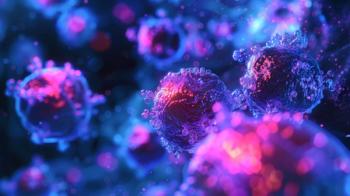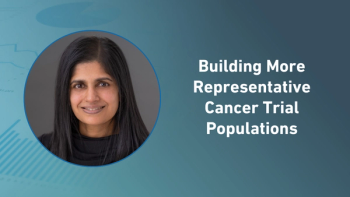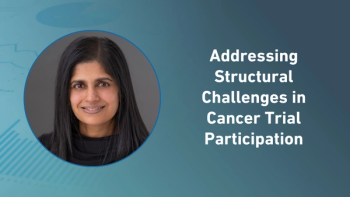Key Takeaways
- High real-world response rate: Amtagvi (lifileucel) achieved a 48.8% objective response rate (ORR) in patients with advanced melanoma previously treated with immune checkpoint inhibitors.
- Stronger efficacy in earlier lines: ORR reached 60.9% in patients treated in the third-line or earlier settings, supporting earlier intervention.
- Milestone cell therapy approval: Amtagvi is the first FDA-approved, one-time personalized T-cell therapy for a solid tumor.
Results from a retrospective study show that Iovance Biotherapeutics’ Amtagvi (lifileucel) demonstrated a notable objective response rate (ORR) in patients with advanced melanoma who had previously received immune checkpoint inhibitors and, where appropriate, targeted therapies. According to the company, the study also revealed particularly strong responses in patients treated in the third-line or earlier settings.1
How Effective Is Amtagvi in Real-World Settings for Advanced Melanoma?
“Lifileucel demonstrates a robust response rate in real-world clinical settings. I am particularly encouraged by the higher response rate in less heavily treated patients,” said Lilit Karapetyan, MD, MS, H. Lee Moffitt Cancer Center & Research Institute, in a press release.
Real-World Retrospective Study Results
- The retrospective study included 41 patients with advanced melanoma and was conducted across four authorized treatment centers.
- Results showed an ORR of 48.8%. In patients who were treated with the drug third-line or earlier, the ORR was 60.9%.
- Additionally, an ORR of 33.3% was demonstrated in patients following three or more prior lines of therapy.
- According to Iovance, further results as well as follow-up from the real-world clinical study will be presented at an upcoming medical meeting.1
Phase II Trial Reinforces Long-Term Benefit
In June, Iovance announced that Amtagvi demonstrated deep and durable responses in patients with advanced melanoma previously treated with anti-PD-1 and targeted therapies, based on results from the five-year Phase II C-144-01 trial (NCT02360579). The trial notably found that a single infusion of Amtagvi demonstrated a 31.4% ORR.2
“Amtagvi has demonstrated long-term benefit and meaningful overall survival in a difficult-to-treat melanoma patient population resistant to immune checkpoint inhibitor therapy,” said Theresa Medina, MD, medical oncologist, University of Colorado Cancer Center on the Anschutz Medical Campus, in a June press release. “Five years following one-time Amtagvi treatment, responses persisted or deepened during an extended treatment-free interval for some patients. Amtagvi offers a new standard of care for the advanced melanoma community and sets a new bar for one-time cell therapies with curative intent in solid tumors.”2
FDA Approval and Therapeutic Milestone
Amtagvi first received FDA accelerated approval in February 2024 for adults with unresectable or metastatic melanoma who had previously been treated with a PD-1 blocking antibody and, if BRAF V600 mutation–positive, a BRAF inhibitor with or without a MEK inhibitor. This milestone marked the first FDA approval of a one-time, personalized T-cell therapy for a solid tumor cancer.3
Melanoma Prevalence and Risk Factors
According to the American Cancer Society, melanoma accounts for only 1% of all skin cancers; however, it results in the most skin cancer-related deaths. By the end of 2025, it is estimated that there will be approximately 104,960 new melanomas diagnosed, with around 8,430 deaths.
Despite these numbers, the death rate dropped significantly between 2013 and 2022, mainly due to advancements in treatment. White people have the highest risk of getting melanoma at around 3%. Hispanic people have a 0.5% chance and Black people have a 0.1% chance. The risk of getting melanoma increases with age, with an average diagnosis age of 66 years; however, it is also one of the most common cancers in young adults.4
“It is remarkable to observe a response in more than half of those patients, supporting consideration of lifileucel as soon as possible after ICI therapy,” continued Karapetyan, in the press release. “I am confident in the potential for positive outcomes in more patients as we continue to adopt lifileucel.”
References
- Real-World Data Demonstrate a 49% Response Rate for Commercial Amtagvi® in Patients with Advanced Melanoma. Iovance. July 14, 2025. Accessed July 14, 2025. https://ir.iovance.com/news-releases/news-release-details/real-world-data-demonstrate-49-response-rate-commercial-amtagvir
- Iovance’s Amtagvi Shows Durable Response in Advanced Melanoma. PharmExec. June 6, 2025. Accessed July 14, 2025. https://www.pharmexec.com/view/iovance-amtagvi-shows-durable-response-advanced-melanoma
- FDA Grants Accelerated Approval to Iovance’s Amtagvi for Unresectable or Metastatic Melanoma. PharmExec. February 19, 2024. Accessed July 14, 2025. https://www.pharmexec.com/view/fda-grants-accelerated-approval-to-iovance-s-amtagvi-for-unresectable-or-metastatic-melanoma
- Key Statistics for Melanoma Skin Cancer. American Cancer Society. Accessed July 14, 2025. https://www.cancer.org/cancer/types/melanoma-skin-cancer/about/key-statistics.html





